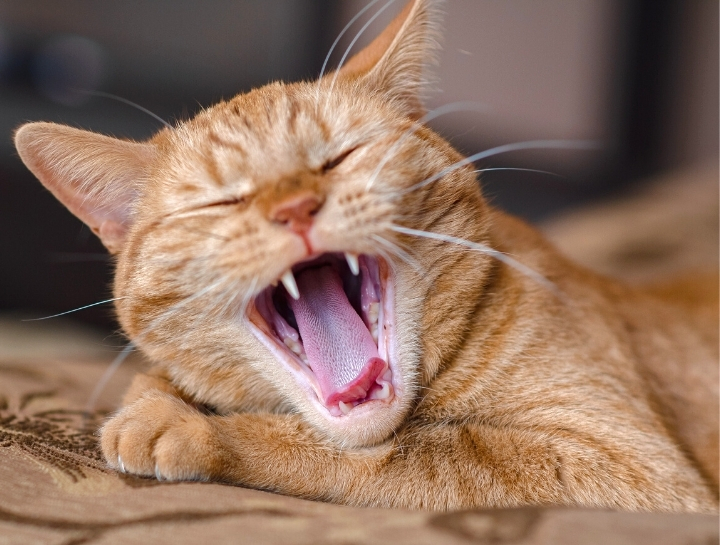The Feline Five of Dental Disease

According to the American Veterinary Dental Society, over 85% of dogs and cats are affected with some form of dental disease by the age of three. Many of these pets, especially, felines, suffer in silence. It is thought that cats routinely mask many of their physical complaints because they could potentially become an easy mark for predation in the wild. This is unfortunate, because dental disease, if left untreated, may become a source of infection for the body, and potentially affect the heart, kidney, and liver over time.
One of the most common dental afflictions affecting cats are gingivitis and periodontal disease. These are frequently “silent,” and can present initially as nothing more than red gums (gingivitis). Eventually, the red gums may progress to lip smacking, tongue thrusting, difficulty eating (especially dry food), and bad breath. If addressed early, a dental cleaning under anesthesia can quickly reverse the inflammation. If allowed to progress, extractions and periodontal therapy may be necessary in order to restore oral health. Prevention involves daily tooth brushing, feeding a dental diet, and professional semi-annual dental examinations.
The second feline dental affliction is Tooth Resorption. This causes erosions of the teeth (“holes”) which frequently occur under the gumline, and may only become apparent on dental “X-rays.” Affected teeth will progressively “resorb” over time and can result in tooth fracture and oral pain. Treatment involves extractions of the affected teeth.
The third and fourth feline dental conditions are Feline Juvenile Gingivitis and Feline Juvenile Periodontitis. These conditions are typically caused by a hyperresponsive (“hypersensitive”) immune system. Feline Juvenile Gingivitis causes severe inflammation in young cats, even as the adult teeth are just erupting. Feline Juvenile Periodontitis occurs in cats by 9 months of age, frequently with a prior history of upper respiratory disease. Treatment for both conditions involves dental therapy, and, in the latter condition, may include dental extractions. Regular home care directed toward plaque control, dietary adjustments, and periodic dental cleanings are also recommended.
The final of the “Feline Dental Five” is a painful condition called Feline Gingivostomatitis. This is an inflammatory condition where the immune system malfunctions and is characterized by intense inflammation and irritation of the gum, cheek, and throat tissues. Signs include drooling, difficulty eating, anorexia, oral pain, and weight loss. The most effective treatment involves extractions of most or all of the teeth.
Focusing on feline (and canine, too!) dental disease is especially important since our pets cannot or will not communicate their oral health issues to those around them. An oral evaluation by a veterinary professional, and if necessary, dental therapy (including a thorough dental cleaning) is especially recommended during Brick Town Veterinary Hospital’s Dental Health Initiative.
About the Author
Debra Fiorito, DVM, FAVD, Dip. AVDC, obtained her Animal Science degree from Cook College, Rutgers University in 1979. She was the first in the state of New Jersey to become board-certified as a veterinary dental specialist with the American Veterinary Dental College in 1995.
